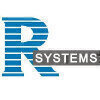Top 30 iOS Development Interview Questions and Answers
Updated 12 Jul 2025

Asked in Brim Labs

Q. When should you use UITableView versus UICollectionView?
UITableView for displaying data in a list format, UICollectionView for displaying data in a grid or custom layout.
Use UITableView for displaying data in a list format, such as a contact list or a news feed.
Use UICollectionView for displaying data in ...read more

Asked in Infosys

Q. What is the difference between weak and unowned references?
Weak references allow deallocation; unowned references assume the object exists and do not allow nil.
Weak references can become nil if the object they reference is deallocated.
Unowned references do not become nil; they assume the referenced object wi...read more

Asked in Innovation Incubator

Q. Can you explain what auto layout is?
Auto layout is a constraint-based layout system that allows developers to create adaptive user interfaces for different screen sizes and orientations.
Auto layout helps in creating responsive designs that adjust to different screen sizes and orientati...read more

Asked in JM Financial

Q. How do you perform requirement analysis for an iOS app?
I conduct requirement analysis for iOS apps by gathering user needs, defining features, prioritizing requirements, and creating user stories.
Gather user needs through interviews, surveys, and feedback
Define features based on user requirements and bus...read more
Asked in ChatWise

Q. What are delegates and notification centers in iOS?
Delegates and notification center are key components in iOS development for communication between objects and broadcasting events.
Delegates are used for one-to-one communication between objects, allowing one object to act on behalf of another.
Notific...read more
Asked in Azentech Software Solutions

Q. What are the steps to add a collection view in Swift?
Steps to add collection view in Swift.
Create a UICollectionView instance
Set the delegate and data source of the collection view
Implement the required methods of UICollectionViewDataSource and UICollectionViewDelegate protocols
Register the cell class ...read more


Asked in Xetech

Q. What design patterns are commonly used in iOS development?
iOS design patterns include MVC, MVVM, Singleton, Factory, and Observer.
MVC separates data, view, and controller logic
MVVM adds a view model to handle data binding
Singleton ensures only one instance of a class exists
Factory creates objects without ex...read more

Asked in R Systems International

Q. What are the best practices for handling memory leaks in iOS development?
Best practices for handling memory leaks in iOS development
Use Instruments to identify memory leaks
Avoid strong reference cycles with weak or unowned references
Use autorelease pools for temporary objects
Implement proper memory management with ARC (Au...read more

Asked in Jio

Q. What is MVVM in Swift?
MVVM (Model-View-ViewModel) is a design pattern used in Swift to separate the user interface logic from the business logic.
MVVM divides the code into three main components: Model, View, and ViewModel.
Model represents the data and business logic of th...read more

Asked in Accenture

Q. Tell me about the iOS lifecycle.
iOS life cycle refers to the sequence of events that occur from the time an app is launched until it is terminated.
App launch: App is launched by user or system.
Foreground: App is in the foreground and user interacts with it.
Background: App is runnin...read more
iOS Development Jobs




Asked in Mobikwik

Q. What is the bridge between SwiftUI and UIKit?
The bridge between SwiftUI and UIKit is represented by the UIViewRepresentable and UIViewControllerRepresentable protocols.
UIViewRepresentable and UIViewControllerRepresentable protocols allow SwiftUI views to interact with UIKit views and controller...read more

Asked in Concerto Software Systems

Q. How do you integrate a pod into a project?
To integrate pod in project, add pod dependency in Podfile and run pod install command.
Open Podfile in Xcode project
Add pod dependency in Podfile
Run pod install command in terminal
Open .xcworkspace file instead of .xcodeproj file

Asked in LTIMindtree

Q. What is the difference between GCD and operation queue?
GCD and Operation Queue are both used for managing concurrent tasks, but GCD is lower level and more efficient.
GCD is a C-based API for managing concurrent tasks
Operation Queue is a higher-level API built on top of GCD
GCD uses a thread pool to execut...read more

Asked in Accenture

Q. Explain how Core Data works.
CoreData is a framework provided by Apple for managing the model layer of an application.
CoreData is used to manage the model layer of an application by providing an object graph management and persistence framework.
It allows developers to define dat...read more

Asked in Mastek

Q. What is the difference between DispatchQueue and OperationQueue?
Dispatch Queue is a high-level API for managing concurrent operations, while OperationQueue is built on top of Dispatch Queue and adds additional features for managing operation objects.
Dispatch Queue is a lightweight way to execute tasks serially or...read more

Asked in Seneca Global IT Services

Q. Explain Cocoa Pods.
CocoaPods is a dependency manager for Swift and Objective-C projects.
CocoaPods is used to easily manage and install third-party libraries in iOS projects.
It uses a Podfile to specify project dependencies and automatically downloads and integrates the...read more

Asked in Birlasoft

Q. What is Dispatch Group?
Dispatch Group is a mechanism in iOS for managing multiple tasks and synchronizing their completion.
Dispatch Group allows you to monitor a group of tasks and be notified when they are all completed.
You can use Dispatch Group to wait for multiple asyn...read more

Asked in Cornerstone OnDemand

Q. Explain the Core Data stack.
Core data stack is a set of classes that work together to manage the model layer of an iOS application.
Consists of Managed Object Model, Persistent Store Coordinator, and Managed Object Context
Managed Object Model defines the data model schema
Persist...read more

Asked in Turing

Q. What is ARC and what is retain count?
ARC stands for Automatic Reference Counting, a memory management system used in iOS development. Retain count is the number of references to an object.
ARC is a memory management system in iOS that automatically tracks and manages memory usage.
Retain ...read more

Asked in Big Oh Notation

Q. What are the differences between Dispatch Queues and Operations?
Dispatch Queue is a thread-safe way to execute tasks asynchronously, while Operations are a way to encapsulate tasks.
Dispatch Queue is a high-level API for managing concurrent operations.
Operations are objects that encapsulate a single task or multip...read more

Asked in Walmart

Q. GCD vs Operation queue
GCD is a low-level API for managing concurrent operations, while Operation Queue is a higher-level API built on top of GCD.
GCD is a C-based API for managing queues of tasks, while Operation Queue is an Objective-C class that provides a more object-or...read more

Asked in BeatO

Q. tableview delegate methods
Tableview delegate methods are used to customize the behavior and appearance of tableviews in iOS applications.
Implementing UITableViewDataSource methods like numberOfRowsInSection, cellForRowAt, and heightForRowAt to populate the tableview with data...read more

Asked in ivy

Q. Explain URL Session using completions.
URL Session using completions is a way to handle network requests in iOS development.
URL Session is a class in iOS used for making network requests.
Completions are closures that are called when a network request completes.
Using completions allows for...read more

Asked in Facebook

Q. How would you describe iOS manual memory management to a new developer in a few words?
iOS manual memory management requires developers to manually allocate and deallocate memory for objects.
Developers must manually allocate memory for objects using methods like alloc and init.
Developers must also manually deallocate memory for objects...read more

Asked in BYJU'S

Q. What are the differences between KVO and KVC?
KVO is used to observe changes in an object's properties, while KVC is used to access an object's properties using a key.
KVO stands for Key-Value Observing and is used to observe changes in an object's properties.
KVC stands for Key-Value Coding and i...read more

Asked in Omega Healthcare

Q. What are the native libraries in iOS?
Native libraries are pre-compiled code that can be used in iOS apps for various functionalities.
Native libraries are written in languages like C, C++, and Objective-C.
They can be used for tasks like image processing, audio and video playback, and net...read more

Asked in Access Healthcare

Q. Model classes with uikit
Model classes in UIKit are used to represent data in an application's user interface.
Model classes in UIKit typically subclass NSObject and are used to store and manage data for views.
They can include properties to represent different data fields, me...read more

Asked in Seneca Global IT Services

Q. Explain UITableViews.
UITableViews are a type of view in iOS development used to display data in a scrollable list format.
UITableViews are commonly used in iOS apps to display lists of data, such as contacts, messages, or settings.
They consist of rows and sections, with e...read more

Asked in HSBC Group

Q. Explain auto layout.
Auto layout is a constraint-based layout system used in iOS and macOS development to create user interfaces that adapt to different screen sizes and orientations.
Auto layout allows developers to create flexible and adaptive user interfaces by definin...read more

Asked in Planetcast

Q. What is the lifecycle of a UIViewController?
The life cycle of a UIView controller includes methods for initialization, appearance, disappearance, and deallocation.
ViewDidLoad - called when the view controller's view is loaded into memory
ViewWillAppear - called before the view is added to the v...read more

Top Interview Questions for Related Skills
Interview Questions of iOS Development Related Designations



Reviews
Interviews
Salaries
Users











